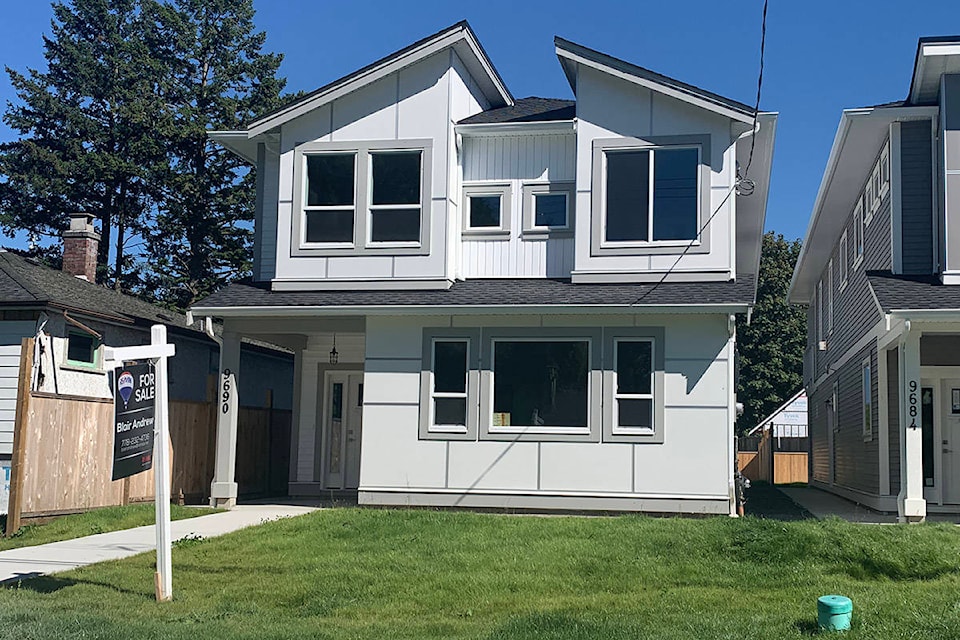If July wasn’t a busy enough month for real estate sales in the Chilliwack area, August was even busier.
Last month saw 400 home sales in the Chilliwack and District Real Estate Board (CADREB) area up from 353 in July and 247 in August 2019, making it the busiest August ever surpassing the 351 and 380 sales for the month during the real estate boom of 2016 and 2017.
The 10-year average for sales in August is 234.
And prices for all types of housing are going up as their appears to be no economic uncertainty when it comes to home sales entering the seventh month of the COVID-19 pandemic, according to CADREB president Kim Parley.
• READ MORE: Huge month for Chilliwack real estate in July
“With some elements of the economy showing more strength and an escalation from pent-up demand in the early months of the pandemic, buyers are now looking to get ahead of further price increases,” Parley said in a press release.
The CADREB area includes Chilliwack, Cultus Lake, Agassiz, Harrison Hot Springs, Hope, Boston Bar and the rural areas in between.
The average selling price of all housing types last month in the area was $586,976 up 14 per cent from $515,460 in August 2019.
Single family homes continue to be the hot seller with 218 sold last month for an average price of $676,099 up 11 per cent from the average of $606,839 a year ago.
The average townhouse sold for $456,946 up 13 per cent from $403,333, with the average apartment going for $298,021 up from $271,714.
“Housing is still a major driver of the economy, and renovations and new construction have remained very active during this market,” Parley added.
“Continued historically low interest rates also plays a huge part”.
Of the 400 home sales last month, the highest number (37) were in the $600,000-to-$649,000 range, followed by 35 sales in the $450,000-to-$499,999 range. There were 20 homes sold over the $1 million mark, including six over $1.5 million.
Homes are selling quickly, at an average of only 23 days on the market, half the time than it took at this time last year.
With demand evident for all types of housing and price ranges, Realtors say that more inventory is needed. At the end of August, there were 1,000 homes on the local market, compared to just over 1,550 at the same time last year.
The CADREB area was not alone in the hot sales for August as the next door Fraser Valley Real Estate Board, which covers Abbotsford to White Rock, saw its highest sales for the month in a decade.
So what’s up with hot home sales in a sluggish economy amid a global pandemic?
Andy Yan, director of Simon Fraser University’s City Program, said there are so many factors involved in the local housing market that determining causes can be like “3-D chess,” but there are a few factors that stand out.
First, he pointed to the fact that some sectors of employment were affected much more by COVID-19.
“It’s people who were more in service, lower paid types of industries,” Yan noted in an interview with Black Press Media.
• READ MORE: SFU housing expert explains Lower Mainland’s surprising real estate sales numbers
Those in higher-paid jobs, whether in construction and trades or white collar office work, kept right on working through the early phases of the pandemic, though some switched to working from home. The people who were hurt the worst economically were the least likely to be able to afford a house in the first place.
Pent-up demand among those who couldn’t buy a home during March and April also likely plays some role.
Then there’s the changes to the work lives of those who do have the money to buy a new home – some of them are considering working from home long term.
“They’re not really commuting as much,” Yan said.
That can affect outer suburban communities like Langley, Abbotsford and Chilliwack in particular, making neighbourhoods in the Fraser Valley more attractive.
Another major factor was rock-bottom interest rates. Although rates had been historically low even before the pandemic, they dropped down even further as the Bank of Canada slashed the prime lending rate in March.
For those ready to buy, that made a mortgage more affordable, noted Yan.
So, can he say what might happen in the months to come in local real estate markets?
“I always tell people I’m very good at predicting the past,” Yan joked.
Factors that could impact housing sales and prices include the possibility of a second lockdown if there’s a major “second wave” of coronavirus in the fall, Yan said.
He also said it depends what happens in some employment sectors. Some businesses that were initially hit hard have pivoted to new ways of doing business and are already recovering.
Yan also suggested that there is a “floor” underlying the price of housing in the Fraser Valley because local economies may, in some ways, be more resilient than that of downtown Vancouver.
For example, the loss of cruise ship business for an entire season will hit many businesses in downtown Vancouver hard. But Fraser Valley economies rely on other sectors, such as light manufacturing, warehousing, and agriculture, which were not as severely affected.
– with files from Matthew Claxton, Langley Advance Times
Do you have something to add to this story, or something else we should report on? Email:
editor@theprogress.com
Like us on Facebook and follow us on Twitter.
Want to support local journalism during the pandemic? Make a donation here.
